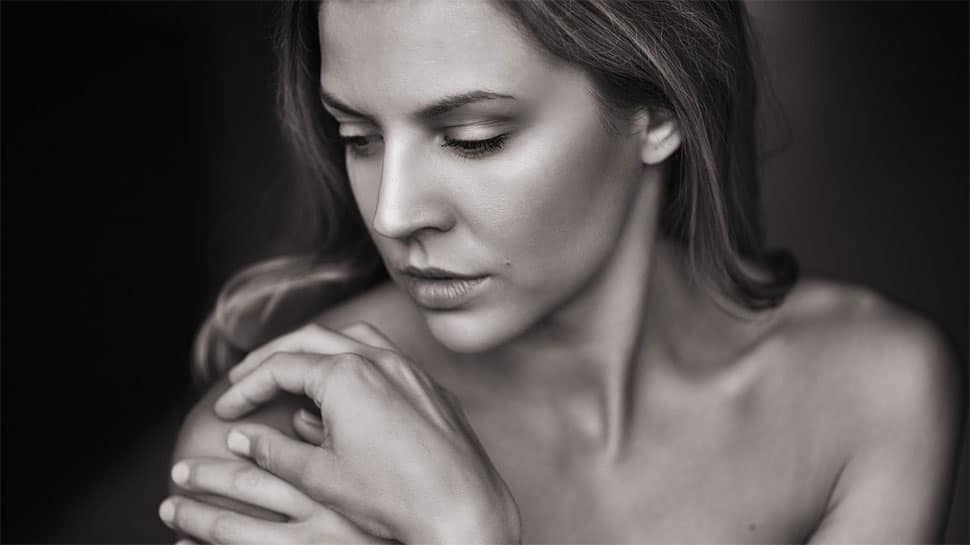Max Beckmann painted that same world, more than a century ago. “Max Beckmann: The Formative Years,” an absorbing exhibition at the Neue Galerie, focuses on the German painter’s emergence as a distinct voice from 1915 to 1925. It includes work made during his brief but harrowing service as a medical orderly during World War I and arresting, large-format works painted as he was becoming a leading figure in the New Objectivity movement (a label he resisted). Thus, it traces his artistic evolution, from a painter devoted to 19th-century modes and styles, including impressionism, to an artist who rendered the world with an unflinching eye and a distinct blend of realism and grotesquerie.
This is art from the crucible of modern barbarism, the sickening aftermath of an idiotic war that left behind festering misery, broken bodies, shattered souls and political chaos. Beckmann renders the physical and psychical trauma in drawings and works on paper made in the years just after the war: A disfigured soldier rides a tram with a bandage wrapped across his face, probably hiding the vacuity that was once his nose. In the same 1922 drypoint, he is crowded onto a narrow tram seat with another man who sucks his thumb and a gaunt woman who stares at the ground, her eyes almost shut with exhaustion.
Throughout the exhibition, curated by Olaf Peters, Beckmann gives visceral reminders that war is a busy, crowded affair, the most brutal of multisensory, immersive experiences. He develops a personal iconography in which appeals to the senses are foregrounded: People clasp their hands to their eyes, their ears, their mouths, almost as if the painter is trying to express the exact opposite of the old proverb “See no evil, hear no evil, speak no evil.” The world, like crowded tram cars, streets and nightclubs, is full up with evil, and there is no shutting it out, even momentarily.
In a 1919 series of lithographs known as the “Hell Portfolio,” Beckmann titled the first of the narrative images “The Way Home,” which could refer to what is shown — a nocturnal street scene full of people making their way back to whatever they call home — or to the larger return to a deeply troubled civic life and revolution after the end of the war. Beckmann gathers all the modern furies — hunger, radicalism, violence — in taut, frenetic scenes of street clashes, assassination, poverty and the mania of desire and consumption that act as temporary escapes.
These sketches of postwar life are remarkably different from work Beckmann was making before the war. The catalogue references some of those earlier works, but unfortunately the exhibition (for practical reasons, including their scale) doesn’t include them. The 1905 “Young Men by the Sea” was Beckmann’s first great work, a giant canvas more than eight feet long, with elongated male figures standing about in leisurely communion with the vastness of the water beyond. Its colors and landscape bear traces of Cezanne, while the sinewy languor of the young men suggest that they are, like the painter, lost in the solipsistic vitality of youth, and perhaps too much Nietzsche.
Beckmann is seen sitting before another giant canvas, the “Sinking of the Titanic,” in a 1912 photograph reproduced in the catalogue. The painting bustles with drama and incident, but it lacks the intense claustrophobia of the work he would begin making after 1915. It is busy, but not crowded, and its narrative sprawls over the large space of the picture without ever coming into focus.
In the drawings made after his service in the war, everything gets tighter. The edges of his paintings imprison and concentrate the violence, sorrow and grotesquerie. The subject matter turns persistently to the cabaret and circus, which are intensifiers of life, especially its precariousness and absurdity. Even when war isn’t the subject, the multisensory shock of war lingers in works that animate the senses. In the 1923 “Still Life With Fish and Pinwheel,” green leeks rise like an excrescence of smells from platters of dead fish, while a pinwheel hints at the drafts and currents of air that will carry this stench far beyond the frame of the painting. In the 1921 “The Dream,” the fish are back, along with organ grinders, trumpets, lutes and a cello, in a painting that evokes the surreal and deafening silence of dreams.
“The Dream,” like so many of Beckmann’s paintings, is a sharply vertical work. That format, which he sometimes uses for landscapes as well, including the 1926 “Landscape With Vesuvius,” may recall the format of triptych panels from Renaissance paintings, or the distinctive geometry of Jesus on the cross and the deposition of his body. But it also creates a sense of everything being tenuously and perilously in the air, like a cupboard full of dishes and foodstuffs precariously piled one on another.
Beckmann was an ambitious artist, and we see him in evening wear, in bourgeois togs and a bowler hat. Nightlife crowds yet more people into narrow spaces, bars with low ceilings and, in the case of a remarkable 1923 print “Tamerlan,” into a curious vertical fantasy of staircases and ascending waiters reminiscent of Piranesi’s famous imaginary prison etchings from the 1740s. Nightlife has been reduced to pure motion, waiters bearing champagne aloft while people seem to tumble into the foreground from a perspective that defies logic.
There is tragedy lurking beneath the sardonic humor of these works. In the portraits Beckmann made during this period, we see people who would not survive the gathering violence and authoritarian cravings unleashed by Hitler. One very fine portrait, of Elsbet Gotz, shows a handsome woman in an elegant green dress, her hands clasped demurely in front of her. Gotz, the daughter of a prosperous bourgeois family, would be murdered at Auschwitz.
Ten of Beckmann’s works were included in the infamous “Degenerate Art” exhibition of 1933, an all-too urgent sign that the Nazis had placed a target on him. He fled Germany and lived for a while after the war in St. Louis, where many of his works remain in public and private collections. Beckmann died in 1950, as abstraction was leading artists in directions that must have made his works seem quaint, a relic of earlier ideals of representation.
The obsession with circus themes and dreams and the crowding of people into volatile social spaces may make these works seem like period pieces. You want to hum the melodies of Kurt Weill and mouth the lyrics of Bertolt Brecht: “And for once you must try not to shirk the facts/ Mankind is kept alive/ by bestial acts!”
And yet, that’s not the end of it, because Beckmann’s willingness to witness and record ugly truths was at some level deeply heroic. If you attend to the chaos and tumult of these images, and their craving for an art that animates all the sense and conscience, too, you’ll find warning signs as pertinent today as they were a century ago.
Max Beckmann: The Formative Years Through Jan. 15 at the Neue Galerie, New York. neuegalerie.org.















































